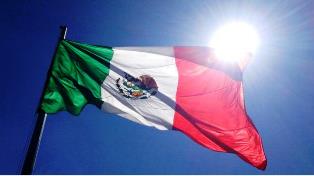
 Climate change is no longer the stuff of the future—and countries throughout the Americas are taking concrete steps to address its effects. To help the OAS member countries exchange information on this critical issue, this newsletter will offer an occasional focus on a specific country, to see what policies and measures it is adopting to confront the multiple challenges of climate change. First up is Mexico, which has set ambitious goals for expanding renewable energy and reducing its dependence on fossil fuels.
Climate change is no longer the stuff of the future—and countries throughout the Americas are taking concrete steps to address its effects. To help the OAS member countries exchange information on this critical issue, this newsletter will offer an occasional focus on a specific country, to see what policies and measures it is adopting to confront the multiple challenges of climate change. First up is Mexico, which has set ambitious goals for expanding renewable energy and reducing its dependence on fossil fuels.
In recent years, Mexico has adopted various legal mechanisms, regulatory frameworks, and financial instruments to address energy issues. Since 2007, its Sustainable Energy Fund has encouraged scientific and technological research in energy efficiency, renewable energy sources, use of clean technologies, and diversification of primary energy sources. The Fund for Energy Transition and Sustainable Energy Development, for its part, finances projects carried out by the public, private, and academic sectors and nongovernmental organizations.
Mexico has focused many of its efforts on the use of renewable energy. Its Law for the Development of Renewable Energy and Energy Transition Financing (LAERFTE, for its acronym in Spanish), adopted in 2008 and amended since then, calls for the country to generate 35 percent of its electricity needs from sources other than fossil fuels by 2024.
The Special Program on Renewable Energy Development (PEAER), which was launched a few months ago, aims to increase installed capacity and the generation of electricity from renewable sources; boost public and private investment in generating power and in building and expanding the interconnection infrastructure; increase the share of biofuels in the national energy mix; and facilitate the development of renewable energy technology, talent, and value chains.
“It is necessary to develop a long-term perspective to ensure that renewable energy sources are integrated into the electricity matrix in a way that is optimal from an economic, environmental, and social standpoint,” states the program’s description, published in the Official Federal Gazette in April 2014.
From 2008 to 2012, according to official figures, fossil fuels accounted for about 80 percent of the electricity generated to meet non-commercial public sector demand, such as for government buildings. Within this category of use, hydroelectric power was by far the largest renewable source, accounting for 79 to 84 percent of the electricity generated from renewable energy, with geothermal ranging from 15 to 20 percent.
Mexico is in the process of developing other renewable sources, including major wind energy projects in the state of Oaxaca and others planned for Tamaulipas and Baja California. The PEAER identifies solar power as having enormous potential for generating electricity in Mexico, but states that so far this potential is theoretical, as detailed feasibility studies have yet to be done. A pilot solar photovoltaic project was implemented in 2012 in Baja California Sur.
Given the importance of compiling information and doing research to identify the potential for developing renewable resources, Mexico has established a National Renewable Energy Inventory (INER). The INER manages the National Atlas on Feasible Areas for Renewable Energy Development, a tool used to identify possible sites for power stations— primarily for wind and solar energy projects—based on environmental and land use factors.
The country also has renewable energy programs to benefit vulnerable populations, such as for example the Electrification Project for Isolated Communities. This initiative seeks to use energy from renewable sources to provide electricity to communities in extreme poverty whose geographical location makes it impossible to provide electricity by conventional means. The project will provide and install small-scale electrification kits that include a solar photovoltaic panel and/or a small wind turbine with a 250W capacity.
Another renewable energy program supports productive activities in rural settings, identifying areas that are technically and economically suited to electrification using renewable energy sources. Specifically, this initiative includes a portfolio of rural options such as micro-hydroelectric and micro-wind projects, photovoltaic systems, biomass, low-heat geothermal, and micro-cogeneration. It also establishes a model for operating and maintaining rural electrification projects by creating electric cooperatives, which are set up, operated, and maintained by the beneficiaries themselves.
To strengthen the impact of renewable energy efforts, the Clean Energy in the Federal Government Program aims to give federal buildings and facilities the capacity to supply their own electricity by using renewable energy sources, and thus achieve significant operational and maintenance savings.
The government has also created a special mechanism (Ventanilla de Energías Renovables) to streamline procedural requirements and reduce paperwork for renewable energy projects as another way to stimulate investment and help increase the installed capacity for power generation.
Mexico is also a regional touchstone on energy efficiency, thanks to initiatives such as the National Program for Sustainable Energy Development (PRONASE). This mechanism establishes strategies, objectives, actions, and goals to achieve optimum energy use in all processes and activities involving energy development, production, transformation, distribution, and end use. It includes aspects such as energy efficiency, regulation, cooperation mechanisms, institutional capacity-building, promotion of an energy-saving culture, and technological development.
The National Program on Energy Efficiency in Municipal Public Lighting aims to support local efforts to replace inefficient public lighting. The savings in energy use help municipalities recover the investment costs in the new system.
Another program encourages small and medium-sized businesses in Mexico to be energy-wise, providing financing for buying energy-efficient electrical equipment.
For more information on Mexico’s public policies and energy programs, visit the website of its Energy Secretariat.
 View Map
View Map